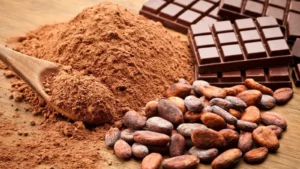Cocoa diseases in Africa, which make up 70% of world cocoa, have driven prices sky-high. This now impacts the chocolate market with increased costs.
Chocolate companies are feeling the price surge. Giants like Mars Inc. cut product sizes, and Hershey’s warns of further price hikes due to cocoa inflation.
In Latin America, rising cocoa costs mean more expenses for producers.
Alexandre Augusto Pereira Gaino, an economics professor, notes that this could lead to higher consumer prices. But demand still depends on factors like income and job availability.
Passing on these costs is hard outside of niche, premium markets. This situation hints at tighter profit margins ahead.

Since the 1980s, cocoa’s average price has been below $3,500 per ton. But on February 22, it hit over $6,000, a first, climbing past $7,000 later.
Experts say diseases are a big problem in West Africa. Latin America, with its younger, healthier crops, faces less disease risk.
This region could fill the gap as West African production drops, encouraged by high cocoa prices.
Despite past diseases like black pods in Latin America, plantations are on the rise. Renewed investments are improving disease resistance.
The spike in global cocoa prices promises unprecedented earnings for Latin American producers. Gaino believes this will boost local output and farm improvements.
The International Cocoa Organization (ICCO) sees America’s cocoa production at 1.052 million tons for 2022–23. A 5% increase is expected next season, led by Ecuador and Brazil.
Production in Latin America and Brazil has grown due to more farms and better methods. Brazil aims to meet its cocoa needs by 2025, reducing imports.
In Colombia, local cocoa prices are tied to New York’s market rate.
Price rises benefit Colombian farming families, says Oscar Dario Ramírez of the National Federation of Cocoa Farmers (Fedecacao).
America contributes about 20% to global cocoa. To leverage the price rise, Latin American farmers need to invest in new trees and watch for new diseases like frosty pod rot.
Higher prices could prompt investments in production, improving quality and efficiency.
Diversifying products to meet various market needs could secure Latin America’s competitive position.
“The price increase encourages farmers to enhance yields, possibly doubling or tripling global averages.
In short, this includes better fertilization and disease management,” a Fedecacao specialist mentioned.

